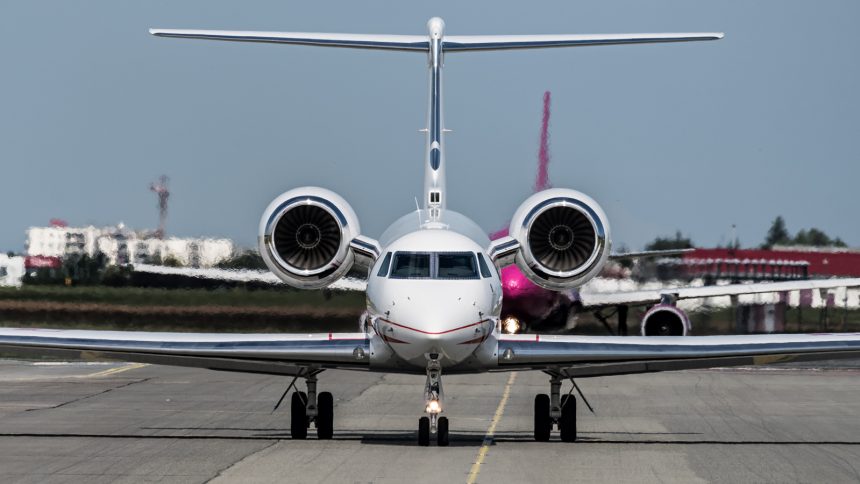The Polish Air Force is renewing its VIP fleet and flights regulation.
Poland is about to change its Presidential and governmental (VIP) flights instructions and requirements, as the Polish Air Force takes delivery of its new aircraft and MoD plans to amend and prepare new regulations with regards to the VIP transport operations.
According to Col. Michał Marciniak, a member of a group within the Polish MoD which works on the new VIP/Head of State flights regulations who recently gave an interview to the Polish dlapilota.pl outlet, “One of the reasons for changes is the expansion of the Polish Air Force’s VIP fleet, including procurement of the new [Gulfstream G550 and Boeing B737-800/BBJ2] jets. Some of the provisions are resulting from the experiences.” Marciniak is probably referring to the controversial Smolensk crash, when the Polish President was killed aboard a Tu-154 in a CFIT (Controlled Flight Into Terrain) incident that took place in very bad weather conditions in Smolensk, Russia back in 2010. During the said infamous flight, e.g. numerous officials were flying together with their replacements (Deputy Ministers and Ministers, Commanders of the Armed Forces and so on) onboard of a single aircraft, which has been one of the reasons for harsh social pressure placed on the authorities, to redefine the VIP transport regulations and requirements.
Indeed the accident caused 96 victims: along with the President of Poland Lech Kaczyński and his wife Maria, the former President of Poland in exile Ryszard Kaczorowski, the chief of the Polish General Staff and other senior Polish military officers, the president of the National Bank of Poland, Polish Government officials, 18 members of the Polish Parliament, senior members of the Polish clergy and relatives of victims of the Katyn massacre.
The crash sparked also a wave of conspiracy theories; however, no evidence supporting the version according to which the accident was the result of a political assassination was found in Polish and international investigations
The first of the listed amendments assumes that the PM, deputy PM and two Vice-PMs may fly on-board of a single aircraft, nonetheless the third vice-PM cannot fly in the same airframe, which shall guarantee continuity of leadership, should any incident take place. This is still a problematic issue, since many important persons would be flying on-board a single jet.
Changes concerning the flying crews requirements seem to be even more worrying.
The VIP pilot has to have at least 250 hours of flight time accumulated on the given type of aircraft. Nonetheless, according to Marciniak “gaining the operational readiness on a new aircraft is prolonged by several months”, hence “task-based flight-time is going to be more important”, as, and this is the most controversial claim “higher amount of hours logged does not always translate into higher skills”. The Polish official states that the new regulations assume that if the pilot can fly in tough weather, this would be sufficient for him to be eligible to fly similar operations in HEAD settings. Ultimately the General Commander of the Armed Forces, would be the decisive person to approve the given crew for VIP operations. Each of the crew members should also have multi-engine aircraft experience, with the commanders having at least 1,000 hours of lifetime flight-time logged.
Arrangement of the VIP flights is also going to be changed, as it would be permissible to plan the flight less than 24 hours before the departure, on condition that the Polish Government Protection Bureau issues an approval and that the commander of the Airlift-responsible military unit issues a confirmation of readiness (i.e. ensuring that a crew is available, with proper approvals issued, airframe is available and so on). The assumption is that in case of the newly acquired VIP aircraft (G550 and to-be-acquired 737 jets) three crews per jet would be formed to ensure that a crew is always available in case an unforeseen flight is requested.
A question that emerges almost instantly, when considering the aforesaid flight-time requirements is that little experience is required to pilot a Polish VIP flight compared to the requirements in place in other air arms.
For instance, in case of the U.S. Air Force One, the Air Force Personnel Center claims that the applicant needs to have flown as an Airlift, Tanker, or C2ISR (E-3, E-4, E-8, KC-135) Major Weapon System (MWS) Aircraft Commander, with no fighter experience. It is also explicitly stated that no fighter pilots would be accepted in that role. The required flight-time in case of AFO is 2,000 hours in total, with 3 years Time on Station. Furthermore, Instructor experience is required. It would be also highly desired by the 89th Airlift Wing that the pilot has logged 2,500 total hours, with 250 gained as a MWS/OSA instructor with evaluator pilot experience. Moreover, the ideal candidate should also have recent worldwide flights experience and minimal number of qualification level 3 (or equivalent) flight evaluations. In practical terms, the AFO pilots often have more than 4,000 hours logged.
According to the reformed Polish regulations, the pilot applying to serve in the 1st Airlift Base in VIP operations may have logged his flight hours on any type of multi-engine aircraft.
Image Credit: Author









